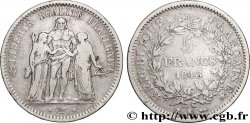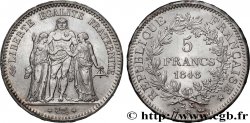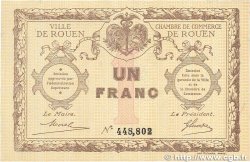v10_0112 - 20 francs or Louis-Napoléon 1852 Paris F.530/1
MONNAIES 10 (2000)
Starting price : 228.67 €
Estimate : 503.08 €
Realised price : 669.25 €
Starting price : 228.67 €
Estimate : 503.08 €
Realised price : 669.25 €
Type : 20 francs or Louis-Napoléon
Date: 1852
Mint name / Town : Paris
Quantity minted : 9857428
Metal : gold
Millesimal fineness : 900 ‰
Diameter : 21 mm
Orientation dies : 6 h.
Weight : 6,43 g.
Edge : en relief : ***** DIEU * PROTEGE * LA * FRANCE
Coments on the condition:
Excellente frappe de coins frais, très récemment repolis (stries verticales dans les champs), parfait aspect de "camée". Tranche forte et légèrement décentrée, ce qui crée des effets de "soulevé" sur le listel. Visule parfait à l'œil nu, hors des traces de cheveux dans le champ gauche du droit, visibles en faisant jouer la lumière sur la monnaie. A la loupe x10, on ne découvre que quelques minimes égratignures et chocs et d'impalpables faibleses de velours, nettes seulement sur les dernières mèches de la moustache et de la barbiche. De mémoire, le plus bel exemplaire que nous ayons vu, provient probablement du rouleau d'origine découvert voici une dizaine d'années / Le velours de frappe n'est absent que sur les sommets des feuilles du revers
Catalogue references :
Obverse
Obverse legend : LOUIS-NAPOLEON BONAPARTE.
Obverse description : Tête nue du président de la République Louis-Napoléon Bonaparte à droite ; au-dessous (différent) BARRE (différent).
Reverse
Reverse legend : REPUBLIQUE FRANÇAISE..
Reverse description : 20 / FRANCS, en deux lignes dans le champ, au-dessus de 1852, dans une couronne composée de deux branches de laurier nouées en bas ; sous le nœud, (A).
Commentary
Cet exemplaire est celui de la COLLECTION IDÉALE. Il illustre le type dans le FRANC III en couleurs.








 Report a mistake
Report a mistake Print the page
Print the page Share my selection
Share my selection Ask a question
Ask a question Consign / sell
Consign / sell
 Full data
Full data











